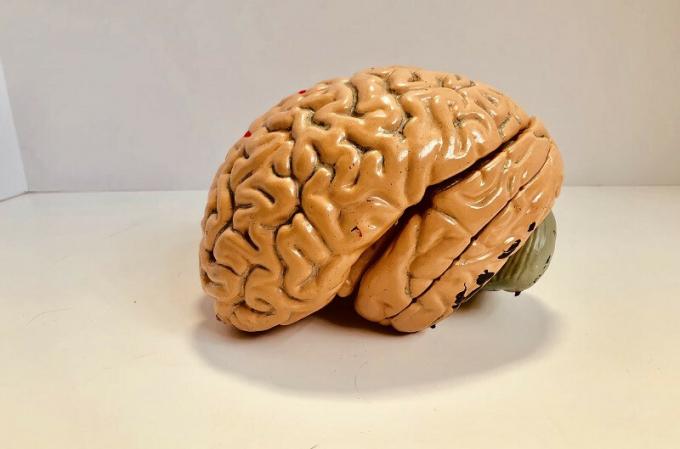Magnetoencephalography: what it is and what it is used for
Magnetoencephalography is one of the best known neuroimaging techniques used both in clinical intervention programs and in lines of research on the human brain. Therefore, it is an example of how technology helps us to know ourselves better.
In this article we will see what magnetoencephalography consists of and how it works, and what are its uses.
- Related article: "Neuropsychology: what is it and what is its object of study?"
Understanding the brain from new technologies
There is no doubt that the brain is a system made up of millions of highly complex biological processes, among which it is worth highlighting language, perception, cognition and motor control. That is why for thousands of years this body has aroused great interest from all kinds of scholars who have provided various hypotheses about its functions.
Some years ago, in order to measure cognitive processes, behavioral measurement techniques were used; such as reaction time measurements and paper and pencil tests. Later, throughout the 90s, great technological advances made it possible to record the brain activity that was related to these cognitive processes. This was a great qualitative leap in this area of research and a complement to the traditional techniques that are still used today.
Thanks to these advances, today it is known that in brain function involves billions of neurons that are interconnected, forming what is known as synaptic connections and these connections are set in motion by electrical impulses in the brain.
Each neuron can be said to work as if it were a “small electrochemical pump” that contains ions, which are charged with electricity, and are in continuous movement, both inside and outside the cell membrane of the neuron. When neurons are charged they provide a flow of current into the cells, and these in turn are stimulated; causing what is known as an action potential that causes the neuron to fire the flow of charged ions.
This electric potential moves until it reaches the presynaptic region and then releases in the synaptic space neurotransmitters that access the cell postsynaptic membrane and immediately cause intra- and intra-ionic flow changes. extracellular.
When multiple neurons and synaptically interconnected cells are activated simultaneously, they provide a flow of electric current accompanied by a magnetic field and, accordingly, they flow into the cerebral cortex.
It is estimated that in order to originate a magnetic field, measurable through measuring instruments that are placed on the head, 50,000 neurons or more need to be active and interconnected. If it were the case that there were electric currents moving in opposite directions, the magnetic fields that accompany each current would cancel each other out (Hari and Salmelin, 2012; Zhang et al., 2014).
These complex processes can be visualized thanks to neuroimaging techniques, including find one that we want to highlight and we will address in more detail in this article, the magnetoencephalography.

- You may be interested in: "Types of neurons: characteristics and functions"
What is magnetoencephalography?
Magnetoencephalography (MEG) is a neuroimaging technique used to measure the magnetic fields produced by electrical currents in the brain. These electrical currents are produced through neural connections throughout the brain in order to produce multiple functions. Each function produces certain brain waves and this would allow us to detect, for example, if a person is awake or sleeping.
MAG is also a non-invasive medical test; therefore, during handling, no instrument needs to be inserted into the skull to detect interneuronal electrical signals. This tool makes it possible to study the human brain ‘in vivo’, so we can detect various mechanisms of the brain in full operation while the person receives certain stimuli or performs some activity. At the same time, it allows us to locate an anomaly, if any (Del Abril, 2009).
With the MEG we can visualize mobile three-dimensional images with which we can detect in a precise way, in addition to the anomalies, their structure and the function they fulfill. This allows professionals to investigate if there is any relationship with the personality of the subjects who present these anomalies, study if genetics play a relevant role and even contrast if they influence cognition and emotions.
- Related article: "The 5 main technologies for the study of the brain"
Who is in charge and where is MEG usually used?
The specialized professional in charge of performing these brain evaluation tests is the radiologist doctor.
This test, as well as the rest of neuroimaging techniques, is usually carried out in hospital settings where all the necessary machinery is available.
The systems that perform the MEG are carried out in a specialized room that must be protected in order to prevent the interference that could be produced by the strong magnetic signals that the environment would produce if it were carried out in a place any.
To carry out this test the patient is accommodated in a sitting position and a "helmet" containing magnetic sensors is placed over the head. The signals that provide the MEG measurement are detected by a computer.
Other techniques that allow studying the brain 'in vivo'
Neuroimaging techniques, also known as neuroradiology tests, are those that allow to obtain an image of the brain structure in full operation. These techniques allow the study of disorders or abnormalities of the central nervous system in order to find a treatment.
According to Del Abril et al. (2009) the most used techniques in recent years, apart from magnetoencephalography, are the following.
1. Computerized axial tomography (CT)
This technique is used through a computer that is connected to an X-ray machine.. The goal is to capture a series of detailed images of the inside of the brain, taken from various angles.
2. Nuclear Magnetic Resonance (NMR)
To develop this technique, use of a large electromagnet, radio waves and a computer is used to capture detailed images of the brain. MRI provides higher quality images than those obtained with CT. This technique was a breakthrough for brain imaging research.
3. Positron emission tomography (PET)
It is considered one of the most invasive techniques. It is used to measure the metabolic activity of different regions of the brain.
This it is achieved by injecting the patient with a radioactive substance that binds to glucose to later bind to cell membranes of the central nervous system through the bloodstream.
Glucose accumulates rapidly in the areas with the highest metabolic activity. This makes it possible to identify a decrease in the number of neurons in a certain area of the brain, in the event that hypometabolism is detected.
- You may be interested in: "Acquired Brain Damage: Its Top 3 Causes"
4. Functional magnetic resonance imaging (fMRI)
This technique is another variant that is used to visualize the regions of the brain that are active at certain times or when performing some activity; This is achieved by detecting the increase in oxygen in the blood in those most active areas. Provides better resolution images than other functional imaging techniques.
5. Electroencephalogram (EEG)
Technique started in the 1920s that is used to measure the electrical activity of the brain by placing electrodes on the skull.
The objective of this tool is to investigate brain wave patterns associated with specific behavioral states (p. For example, beta waves are associated with a state of alertness and also of wakefulness; while delta waves are associated with sleep) and also allows the detection of possible neurological alterations (p. g., epilepsy).
A great advantage that MEG has over EEG is the ability to reveal the three-dimensional location of the group of neurons that is generating the magnetic field being measured.
- You may be interested in: "Parts of the human brain (and functions)"
Advantages and disadvantages of Magnetoencephalography
As with any resource to make the brain an understandable reality and capable of providing relevant data, magnetoencephalography has certain advantages and disadvantages. Let's see what they are.
Advantage
According to Zhang, Zhang, Reynoso and Silva-Pereya (2014), among the advantages of this revolutionary brain measurement technique, the following stand out.
As previously stated, it is a non-invasive test, so it is not necessary to penetrate the interior of the skull with some type of instrument specialized to be able to measure the magnetic fields emitted by neural currents in the various regions of the brain. What's more, it is the only completely non-invasive neuroimaging technique. Of course, its use does not hurt.
In addition, it allows the possibility of view functional images of the brain at times when it is inferred that there may be a disorder but there is no anatomical evidence to prove it. That is why this test shows the local point of brain activity with high precision.
Another advantage that has been found is that it also offers the possibility of examine infants who have not yet acquired the ability to emit behavioral responses.
Finally, according to Maestu et al. (2005) the MEG signal is not degraded by passing through different tissues; something that does occur with the currents captured by the EEG. This allows magnetoencephalography to measure neuronal signals directly and in a matter of milliseconds.
Drawbacks
According to Maestu et al. (2005) the MEG presents some limitations that prevent it from being the definitive technique in the field of the study of cognitions. These limitations are:
- Impossibility of capturing sources that are in the depths of the brain.
- High sensitivity to the environment in which the test takes place.

